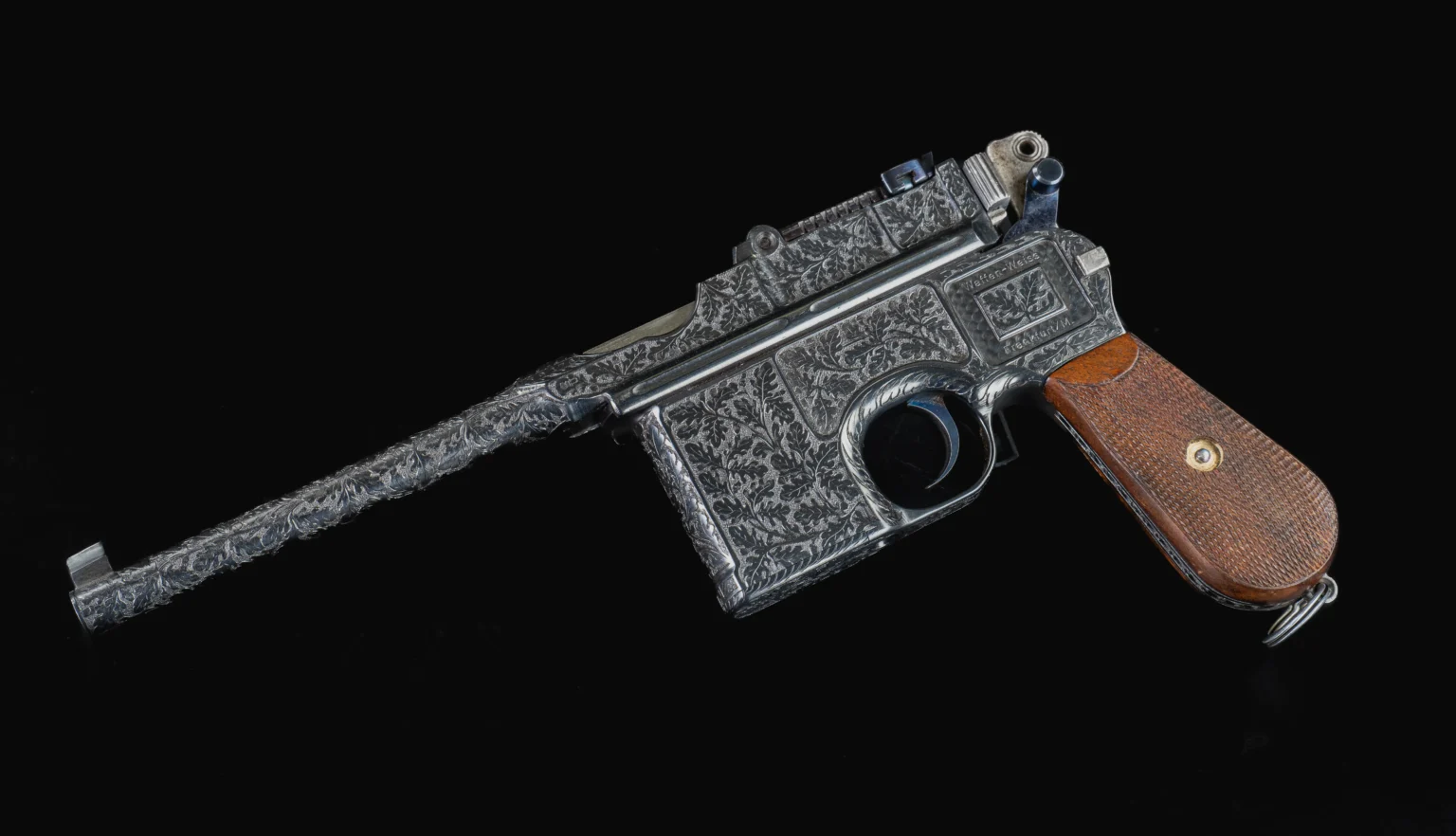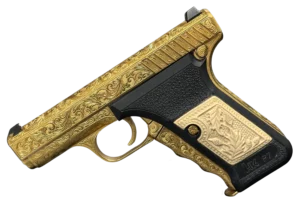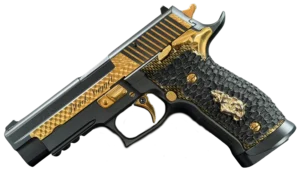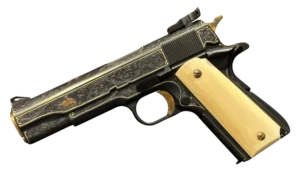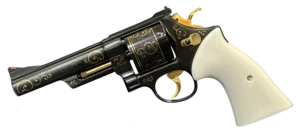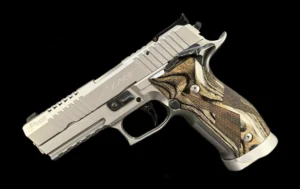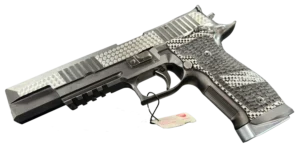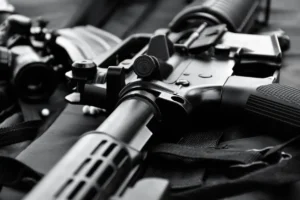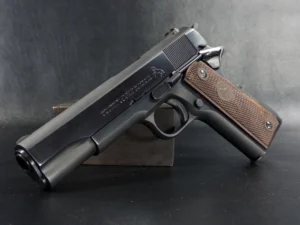Key Takeaways:
- Mauser rifles weren’t just built to impress—they were built to last: From muddy trenches to quiet hunting blinds, Mauser firearms have proven their worth for over a century. Their legacy isn’t wrapped up in hype—it’s rooted in real-world performance and rock-solid engineering that shooters still trust today.
- The Mauser name shaped the way modern rifles work—literally: Controlled-feed bolts, smooth cycling, reliable extraction—these weren’t just clever design choices; they became industry standards. Whether you realize it or not, most bolt-action rifles today carry a bit of Mauser DNA.
- Tradition doesn’t mean standing still—and Mauser gets that: Even with all its history, Mauser hasn’t faded into the past. Modern rifles, like the M18, blend old-school reliability with features that today’s shooters want. The result? A brand that honors its roots without getting stuck in them.
Some names in the firearms world don’t just endure—they become legends. Mauser is one of them. This isn’t just another story about a rifle company; it’s a story about two brothers, a bold vision, and a legacy built on reliability and innovation. From dusty 19th-century German workshops to modern-day hunting grounds and collector safes, Mauser’s journey is packed with moments that reshaped the world of guns.
Let’s take a closer look—because honestly, the Mauser story deserves more than just a bullet-point history.
Small Town, Big Idea – How It All Started
Picture Oberndorf am Neckar, a quiet German town in the 1870s. It wasn’t exactly the center of the firearms universe, but it soon would be. That’s where Wilhelm and Paul Mauser—two brothers with more vision than resources—decided they were going to change how rifles worked.
And they did.
Their first big success came in 1871: the Mauser Model 1871. It was a single-shot bolt-action rifle, yes—but what set it apart was its rock-solid reliability. In a time when misfires and mechanical mishaps were far too common, this gun did what it was supposed to do—every single time.
More than just a weapon, the Model 1871 was a statement. The Mauser brothers weren’t here to follow trends. They were here to build the future of firearms—one precise chamber at a time.
The Mauser 98: The Rifle That Changed Everything
Jump ahead to 1898, and boom—Mauser drops the Model 98. Now, this wasn’t just a new rifle. It was a whole new level of engineering.
The Mauser 98 introduced a controlled-feed bolt-action system that, to this day, remains the gold standard. It was smooth, strong, and, most importantly, it worked. Soldiers trusted it. Hunters loved it. Gunsmiths studied it.
Honestly, if you’ve ever cycled a bolt-action rifle that felt like it was carved from buttered granite, you’ve probably experienced a Mauser-inspired action.
It wasn’t just about mechanics, though. The Model 98 was rugged enough for the trenches and refined enough for the hunt. It set a standard so high that even competitors had to sit up and take notes.
In the Trenches and the Snow – Mauser’s Wartime Role
Wars tend to separate hype from reality. And during World War I, the Mauser Gewehr 98 proved it wasn’t just well-built—it was battle-hardened.
Through the mud, blood, and misery of trench warfare, the Gewehr 98 earned a reputation as a soldier’s lifeline. It fired when others didn’t. It hit when it counted.
Then came World War II. And once again, Mauser was front and center. The Karabiner 98k, a slightly shortened and updated version of the Model 98, became the backbone of German infantry forces. It wasn’t fancy. But it was dependable, accurate, and tough enough for any battlefield.
These rifles weren’t just weapons—they were workhorses that didn’t complain. And that kind of consistency is why Mauser became synonymous with trust.
From Battlefields to Backwoods – Mauser in the Civilian World
You’d think a company that built its reputation on war rifles might slow down when the shooting stopped—but Mauser? They pivoted.
After World War II, Mauser began transforming military tools into sporting masterpieces. The rugged, reliable Mauser action made its way into hunting rifles, and shooters took notice. The lock-up was strong. The cycling was smooth. And the accuracy? Let’s just say it made a lot of hunters look better than they were.
In Europe, Africa, and beyond, Mauser rifles became a staple for serious hunters. Whether stalking deer in Bavarian forests or facing down big game in the savannah, shooters knew they could trust a Mauser.
More than just gear, these rifles became family heirlooms—passed from parent to child, polished with care, and remembered through stories around the fireplace.
Still Kicking – Mauser in the 21st Century
You’d be forgiven for thinking a company founded in the 1800s might be stuck in the past. But Mauser’s still here. And they’re not just resting on old glories.
Take the Mauser M18. It’s a modern rifle built for today’s shooter—affordable, durable, and precise. It combines the old-school dependability of the Mauser name with features today’s hunters and shooters expect: synthetic stocks, modular design, and precision triggers.
Mauser has figured out the trick that many legacy brands fail to master—they honor tradition without being chained to it.
There’s a real sense that Mauser still builds rifles with that same DNA from Oberndorf: smart, no-nonsense, precision tools made for people who actually use them.
The Mauser Effect – What’s the Big Deal?
So why does Mauser matter? Why do collectors light up at the name? Why do competitive shooters and hunters still seek them out?
It’s not nostalgia—at least, not entirely. It’s because Mauser rifles just work. They’ve always worked. And that kind of consistency is rare.
You can thank the Mauser brothers for that. Their original obsession with doing things right—down to the smallest detail—has echoed through every design that followed. Even rifles from other manufacturers owe something to Mauser. Controlled-feed actions, strong locking lugs, reliable extractors—if you’ve got a quality bolt-action rifle, chances are it has a little Mauser DNA in there somewhere.
It’s kind of like Ford with the Model T. Everyone else was trying to figure things out, and Mauser was already lapping them.
One More Round: A Legacy Still Loading
Let’s be clear: Mauser’s story isn’t finished. Not even close.
With every new rifle, they add a fresh chapter to a legacy that’s already one of the most respected in firearms history. Whether you’re flipping through old war memoirs, glassing an elk across a canyon, or lining up a shot at the range, Mauser’s there, quietly, reliably doing what it’s always done.
You won’t find flashy marketing or influencer hype. What you’ll find is a rifle that feels like it was built by people who get it—people who understand that sometimes, the best designs are the ones that stick around.
So yeah, Mauser isn’t just a brand. It’s a living legacy. And if you’ve ever pulled the trigger on one, you already know: it’s not just about the shot—it’s about the story behind it.
Frequently Asked Questions
It wasn’t just well-made—it was revolutionary. The controlled-feed bolt-action system set a new standard in rifle reliability and safety. Even today, many bolt-action rifles borrow heavily from that design. If you’ve used a modern hunting rifle and thought, “Wow, this feels smooth,” there’s a good chance Mauser had something to do with it.
Nope—not even close. While they earned their stripes on the battlefield (especially in both World Wars), Mauser rifles also became go-to tools for hunters, sport shooters, and collectors. After the wars, many military models were adapted for civilian use, and they’re still prized today for their craftsmanship and performance in the field.
Yes, and they’re far from outdated. Modern Mauser models, such as the M18, feature updated components—lighter materials, synthetic stocks, and enhanced triggers—while retaining the brand’s signature durability and accuracy. It’s not a relic company; it’s a legacy that remains strong.
Because, frankly, it did. The Mauser action became the blueprint for countless rifles that followed. Gunsmiths study it. Other companies copy it. It’s like the blueprint for rock-solid performance—and most bolt-actions today owe something to that original design.
Good question. The Gewehr 98 came first—it was longer and used during World War I. The Karabiner 98k was a shortened version developed for World War II, designed to be more practical for infantry use. Same DNA, different format. Think of it like the sedan and sports coupe of the Mauser family.


